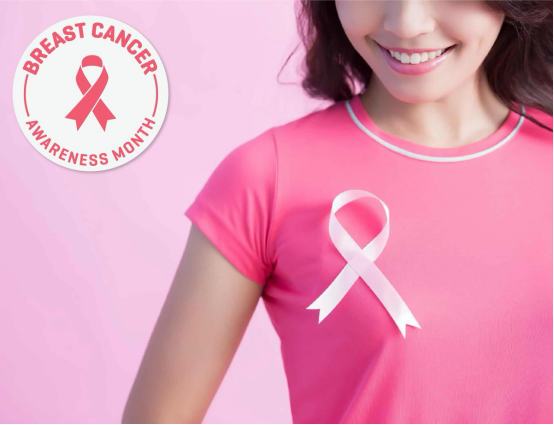都内のネズミ駆除なら専門業者にお任せ|迅速・確実・安心の対応を実現
A Comprehensive Guide to Understanding Triple-Negative Breast Cancer
Triple-negative breast cancer (TNBC) is an aggressive form of breast cancer that represents approximately 10-15% of all breast cancer cases. Unlike other types of breast cancer, TNBC does not have the three most common receptors—estrogen, progesterone, or HER2—which are often targeted by traditional breast cancer treatments. As a result, TNBC is harder to treat, requiring more intensive therapies.
Triple-negative breast cancer (TNBC) is an aggressive form of breast cancer that represents approximately 10-15% of all breast cancer cases. Unlike other types of breast cancer, TNBC does not have the three most common receptors—estrogen, progesterone, or HER2—which are often targeted by traditional breast cancer treatments. As a result, TNBC is harder to treat, requiring more intensive therapies.

What is Triple-Negative Breast Cancer?
Triple-negative breast cancer is diagnosed when cancer cells test negative for the three key receptors:
- Estrogen Receptor (ER): This receptor is found in many breast cancers and allows cancer cells to grow in response to estrogen. In TNBC, this receptor is absent.
- Progesterone Receptor (PR): Similar to estrogen, the absence of progesterone receptors means that cancer cells won’t respond to this hormone.
- HER2 (Human Epidermal Growth Factor Receptor 2): HER2-positive breast cancers are typically aggressive, but TNBC lacks this receptor as well.
Since TNBC does not have these receptors, treatments such as hormone therapy or HER2-targeted therapy, which work well for other breast cancer types, are ineffective. This makes TNBC more difficult to treat, and chemotherapy is often the primary method used.
Causes and Risk Factors of Triple-Negative Breast Cancer
Several factors increase the risk of developing TNBC:
- Genetic Mutations: Inherited mutations, particularly in the BRCA1 gene, significantly increase the likelihood of developing TNBC. Women with BRCA1 mutations have a higher chance of being diagnosed with this aggressive subtype.
- Age: TNBC is more commonly diagnosed in younger women, particularly those under 50.
- Ethnicity: African American and Hispanic women are at a higher risk of developing TNBC compared to other groups.
- Lifestyle Factors: A sedentary lifestyle, obesity, and lack of exercise can increase the risk of breast cancer, including TNBC.
- Hormone Replacement Therapy (HRT): Long-term use of HRT can increase the risk of developing various types of breast cancer, including TNBC.
Symptoms of Triple-Negative Breast Cancer
The symptoms of TNBC are similar to those of other types of breast cancer. They include:
- A lumpin the breast or underarm
- Changes in breast size or shape
- Painor swelling in the breast area
- Nipple inversionor discharge
- Skin changes around the breast, such as redness or dimpling
If you notice any of these symptoms, it is important to seek medical attention for further evaluation.
Stages of Triple-Negative Breast Cancer
TNBC, like other cancers, progresses through stages that help determine the appropriate treatment approach:
- Stage 0: Cancer cells are present but have not spread.
- Stage 1: The tumor is small and localized within the breast or nearby lymph nodes.
- Stage 2: The cancer spreads to additional lymph nodes or tissues around the breast.
- Stage 3: Cancer extends beyond the breast to the chest wall or skin, but hasn’t yet reached other organs.
- Stage 4: The cancer has spread to distant organs such as the lungs, liver, or bones.
Treatment Options for Triple-Negative Breast Cancer
Since TNBC is resistant to hormonal and HER2-targeted treatments, the most common treatments are:
- Surgery: This may include a lumpectomy(removal of the tumor) or a mastectomy (removal of the entire breast) to remove the cancerous tissue.
- Chemotherapy: Chemotherapy is the most common treatment for TNBC, used both before and after surgery to shrink tumors and kill remaining cancer cells.
- Radiation Therapy: Radiation may be used after surgery to target any remaining cancer cells in the breast area.
- Immunotherapy: Emerging treatments like immunotherapy are showing promise, especially for patients with advanced or recurrent TNBC. These therapies work by stimulating the body’s immune system to target and destroy cancer cells.
Side Effects of TNBC Treatments
Treatment for TNBC can cause several side effects, which vary depending on the type of treatment:
- Fatigue: A common side effect of chemotherapy and radiation.
- Nausea and Vomiting: Often a result of chemotherapy, but medications are available to help manage these symptoms.
- Hair Loss: Chemotherapy typically causes hair loss, but this is temporary.
- Skin Changes: Radiation therapy can lead to skin irritation, redness, or peeling.
- Lymphedema: If lymph nodes are removed, fluid can build up in the arms, causing swelling.
Survival Rates and Prognosis
The prognosis for TNBC largely depends on the stage at diagnosis. Early-stage TNBC has a relatively high survival rate, with five-year survival rates of 91% for localized cases. However, TNBC is more likely to recur compared to other types of breast cancer, particularly within the first few years after treatment.
The survival rate for advanced-stage TNBC is lower, but newer treatments like immunotherapy are improving the outlook for many patients. Regular monitoring and follow-up care are essential for managing the risk of recurrence.
Lifestyle and Diet Recommendations for TNBC Patients
Maintaining a healthy lifestyle can improve the quality of life and support cancer treatment:
- Eat a Nutrient-Rich Diet: Include foods high in antioxidants and phytochemicals, such as turmeric, broccoli, berries, and soy. These can help fight cancer and support recovery.
- Exercise Regularly: Physical activity can help reduce fatigue and improve emotional well-being.
- Avoid Processed Foods: Limit the intake of processed foods, sugary snacks, and alcohol, which may negatively affect your health during treatment.
Conclusion
Triple-negative breast cancer is a challenging and aggressive form of cancer, but with early detection and appropriate treatment, it can be managed. While it is harder to treat than other types of breast cancer, therapies such as chemotherapy, surgery, and radiation have been proven effective. Advances in immunotherapy are also providing hope for TNBC patients. Adopting a healthy lifestyle, staying informed about treatment options, and maintaining regular follow-up care are essential for improving outcomes and managing this disease.











